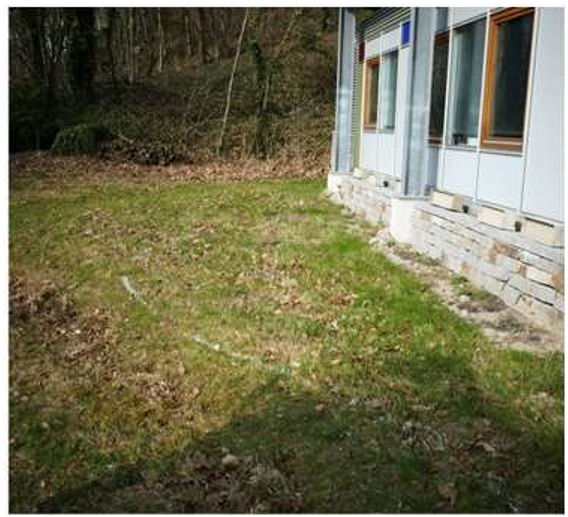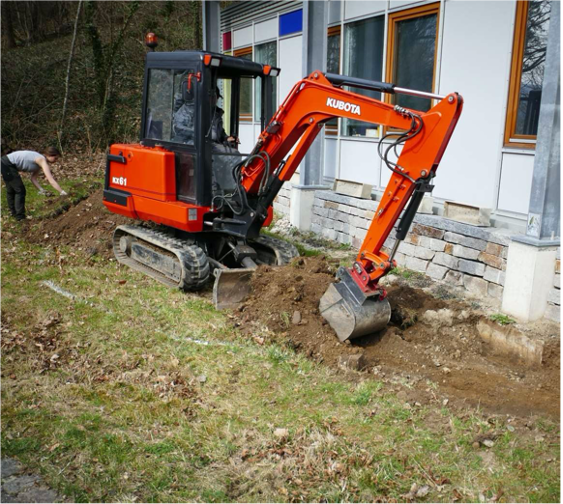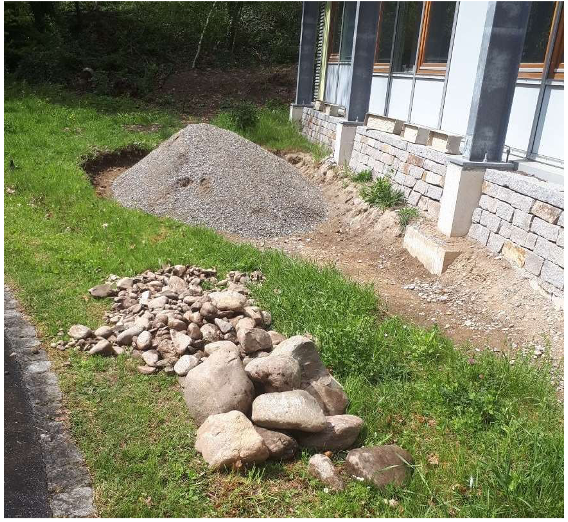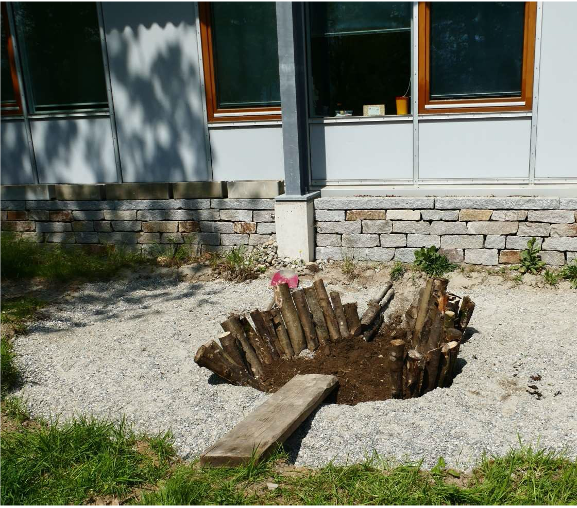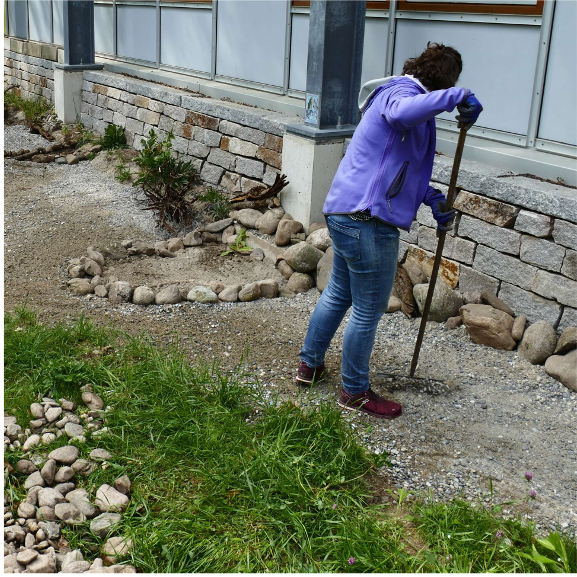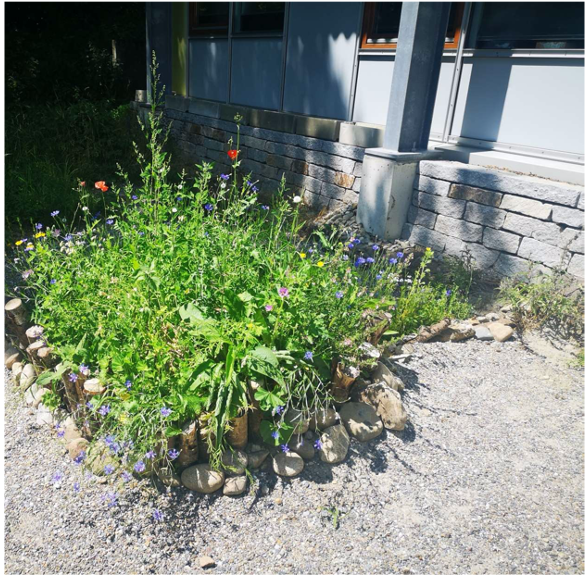According to the Red List, of the more than 550 wild bee species native to Germany, 31 are now threatened with extinction, 197 are endangered and 42 species are on the forewarned list. 50% of wild bee species nest underground in soil structures and cliffs. Many important crops depend on wild bees as pollen vectors. And a whole range of other animals, such as some ichneumon and golden wasps, beetles, flies, and birds, are specialized on wild bees. The decline of wild bees is mainly due to the loss of nesting sites and the loss of food plants. This is because the flight radius also varies depending on body size; Lasioglossum bees, for example, fly only a radius of 100 m to 300 m starting from their nest.
The sand area was built on a dry and hot site. It is sunny until late afternoon. The fine sand lens is a mixture of sand and loess. For nest building, solitary females dig a tunnel into the ground. Depending on the species, this is a few centimeters to over half a meter long. A brood cell is created at the end of the tunnel. The cell walls are elaborately prepared and impregnated with glandular secretions to protect the offspring from moisture and bacteria. The female then carries pollen and nectar into the brood cell in several collection flights. Once the quantity is sufficient, she lays an egg and seals the brood cell. The egg then hatches into a larva that feeds on the food pulp. After feeding completely, it pupates and then hatches as a fully developed bee. Some species of furrowing bees form small colonies that may even be perennial. Nesting sites for ground nesting bees should therefore always be established for the long term. Wild bees also depend on nectar- and pollen-giving forage plants. Suitable for this are, for example, Mediterranean herbs such as oregano or lavender, but also bellflower species such as the Dianthus carthusianorum.

